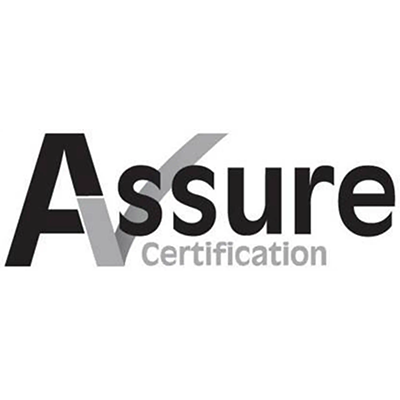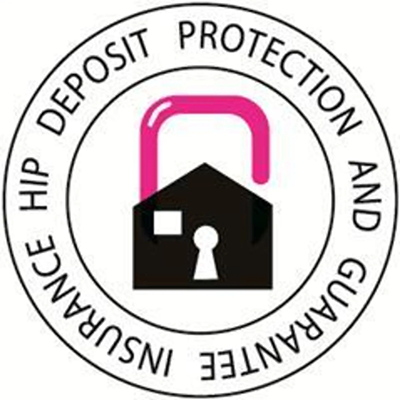Customer Complaints Policy
Introduction
The purpose of this policy is to stipulate how we will identify, manage and respond to any complaints received. This will include our commitment to our customers and our endeavour to always provide the best possible service.
Complaint handling forms a key part of our staff training programme and we ensure that all customer facing staff have been trained in how to identify and manage complaints accordingly.
We firmly believe that we provide a first-class service to all of our customers, however, we do understand that sometimes things may go wrong leaving our customers not entirely satisfied. When we are made aware of any shortcomings in our products or services, we will always respond in a professional and courteous manner, ensuring that all complaints are handled objectively and without undue delay.
The responsibility for complaint handling in our business sits with the Complaints Manager and is referred to as the Complaints Manager throughout this policy.
Our Policy Statement
We believe that we provide a first-class service to our customers.
To ensure that this statement remains true we will proactively:
- Provide each Customer with a copy of our “How to Complain” leaflet when they first do business with us;
- Train all of our staff to identify and handle complaint, but also to understand the importance of our complaint management system;
- Respond positively and professionally if our customers do complain; and
- Learn from any feedback provided by our customers and amend our processes if appropriate to avoid repeat complaints.
We define an eligible complaint as, ‘Any expression of dissatisfaction, whether oral or written, and whether justified or not, from or on behalf of an eligible complainant about the firm’s provision of, or failure to provide, goods &/or services. We will endeavour to ensure complainants are kept informed of the status and progress of their complaint. Our intention is to ensure a consistent approach to communicating with customers whilst handling their complaints.
Handling Complaints
Customers can make a complaint free of charge by any reasonable means (letter, email, telephone call, personal visit). When we receive a complaint from a customer, we will immediately start to collate the information we need to complete the Complaint Management Form (appendix i). All staff are trained to identify complaints. When a complaint is raised, it is passed to the complaints team the same day to ensure that it is dealt with in line with this policy and our regulatory obligations.
They are responsible for the logging and ongoing management of the complaint and have the knowledge and experience to do so in a competent manner.
Customers are able to complain directly to us using a dedicated complaint email address and telephone number. These are routed directly to the Complaints team, who will review the complaint and log it accordingly.
Our first step is to assess whether the complaint points raised relate to us or a 3rd party.
After the initial information has been collected, the Complaints Manager will assign the complaint to an appropriate member of staff or deal with it themselves. The rationale for deciding who will handle each complaint is determined on a priority level (discussed below). The designated person will be independent of the subject matter of the complaint and will not have any conflicts of interest in managing and investigating the complaint. All complaints will be investigated competently, diligently and impartially so we can be sure that we are able to treat our customers fairly. Following the steps shown on the ‘process flow’ below the complaint will be thoroughly investigated and the Customer will be kept appraised by the agreed communication method on a regular basis. Once the complaint has been fully investigated the Complaints Manager will review and authorise the outcome to the complaint and any action to be taken. A final response will be issued to every customer.
Priority-Rating & Logging Complaints
When a complaint is received by the complaints team, it is logged on their tracker and the internal CRM system, both of which are kept up to date as the complaint is investigated and managed to conclusion. Full details of all aspects of the complaint investigation will be retained on the relevant client folder to support the decision reached. The tracker is a live document, showing the up-to-date picture of all complaints. We use this to log when and how a complaint was received, what it relates to and document our latest position in the handling/ investigation process. Recording it in this manner makes it easy for key stakeholders to see the up-to-date position and for root cause analysis to be performed.
The tracker makes it very easy to identify where an action is required and monitor whether all timeframes are being adhered to.
The CRM system is used to log all interactions with customers and record all notes/ updates for complaints.
When a complaint is logged, it is given a priority rating based on the severity of the issue the customer is experiencing. Many complaints relating to the products we have sold will require some parts and a tradesperson to carry out remedial work. So, we can prioritise the most serious of issues, the below is used as a basis for the priority rating:
- Low – Minor issues and imperfections with products which do not affect their performance, such as surface scratches and chips.
- Medium – Issues which do affect the performance of the product but do not pose a safety threat, such as missing products or blown window units.
- High – Issues which could pose a safety concern, such as gas leaks, plumbing leaks and potentially unsafe building work.
Steps Taken to Resolve Complaints
We will endeavour to resolve complaints in a timely manner and to the satisfaction of all concerned. This means we will aim to resolve all complaints quickly while making certain they are also investigated thoroughly, to reassure customers that their complaints have been reviewed fully and the resolution is well founded.
The following standards have been agreed throughout our business and are in line with our regulatory obligations:
- If a 3rd party is solely responsible for the complaint or the reasons for the complaint, we will refer the complaint to them within 5 business days and write to the customer with a final response letter to make them aware of this.
- If a 3rd party is jointly responsible for the complaint with us, we will refer the complaint to them within 5 business days, write to the customer to acknowledge the complaint and to make them aware of this, and then investigate and handle the complaint points relating to us as per our normal process.
- If we are able to resolve a complaint within 3 business days, we will issue the complainant with a summary resolution letter detailing our resolution. An acknowledgement letter will not usually be issued in these instances.
- For every complaint received that cannot be resolved within 3 business days, we will issue the complainant with an acknowledgement letter within 5 business days, along with a copy of our complaint’s procedure.
- We will advise the complainant on each communication when they can expect to hear from us next (appendix iii).
- If after 4 weeks we are still not in a position to resolve a complaint, we will issue the complainant with a ‘4 week holding letter’ advising why we are not yet in a position to resolve the complaint.
- We will endeavour to resolve complaints in a timely manner and within 8 weeks as a maximum.
- If we cannot resolve a complaint within 8 weeks then we will issue a written response which will explain why we have been unable to resolve the complaint within this period and will indicate when we expect to do so, we will then ensure the complainant is kept informed of the progress of the investigation.
- All complaints received and resolved will be recorded so we are able to identify trends through root cause analysis and make the necessary business changes to improve the services to our customers and prevent repeat occurrences.
Customer ‘Concerns’, Expressions of Dissatisfaction (EODs) and Review Site Feedback
We acknowledge that there will be some instances where a customer may have a concern or want to provide us some negative feedback, sometimes anonymously, however they are not wanting to complain and their concern or feedback does not meet the definition of a complaint. We view this as valuable feedback from which we can identify potential issues and trends, and make improvements in our business practices to ensure we are delivering good customer outcomes and the outstanding customer service we pride ourselves on.
We manage this in the following way:
- Review site feedback is monitored by the Operations and Sales Directors. Where a negative review is left, we try to make contact with the customer or request their contact details so we can better understand the service they received, understand whether their concern should be a complaint, and look to turn their negative experience into a positive one
- If a customer contacts us directly to provide us with feedback or ‘concern’ and this would not be considered a complaint, we record these as an EOD on our EOD log. This enables to spot any trends or issues with processes, policies, products, staff, training etc by performing route cause analysis and taking the required action, as identified by this process.
Root Cause Analysis
We accept that as a home improvement business of our size, we will receive complaints and we are committed to handling these complaints in an objective and professional manner to ensure that the right outcome is reached on every case. We however view complaints as an opportunity to identify issues and trends, enabling us to drive continuous improvements in our operations and deliver consistently good outcomes. To do this we perform root cause analysis of our complaints, online reviews and EODs on a regular basis no less frequently than quarterly. Root cause analysis will be performed by the Operations Director in the following way:
- Use the information within the complaints tracker and the CRM to identify any recurring issues relating to a product, service, process or individual
- Look to identify:
- What has happened?
- When did it happen?
- Where did it happen?
- Why did it happen?
- To identify why an issue has occurred, and determine the ultimate root cause, we will use the simple ‘5 whys’ methodology.
- Wherever gaps or issues with existing policies and procedures are identified, the Operations Director raises these with the relevant heads of departments and ensures that the required action is taken. This could be changes to processes, training, or potentially disciplinary action.
- The outcome of root cause analysis and the progress on the action being taken as a result of this, are to be a topic of discussion at board meetings.
Monitoring Of Compliance with This Policy
The complaints team are given the necessary tools, support and training to be able to carry out the duties of their role to the required level, however due to how important effective complaint handling is to our business, we have implemented ongoing monitoring of the activities of our complaints team to ensure that this policy is being adhered to and that right outcomes are being reached. This will be conducted by the Operations Director and will look as follows:
- Daily reviews of the complaints tracker and the CRM system to ensure that the necessary action is being taken and that all regulatory timeframes will be met.
- Regular spot checks of open complaints to ensure that the action being taken is appropriate and in line with this policy. Feedback is to be provided in writing to the Complaints Manager with any issues raised as an immediate concern.
- Regular case reviews of closed complaints to ensure that the investigation was conducted in an objective manner, timeframes were met and the appropriate outcome was reached. Feedback is to be provided to the Complaints Manager in writing.
The Operations Director will look to review circa 10% of open cases per month as well as 10% of cases closed within the calendar month, ensuring that:
- A sufficient number of cases are reviewed for all members of the complaints team
- The cases reviewed cover a broad spectrum of complaints in terms of the reason for complaint, the age of the complaint and the whether the complaint was upheld or not.
The frequency of case reviews will increase and decrease:
- Based on complaints volumes. If there is an increase in the number of complaints then case reviews will increase to ensure that cases are still being handled accordingly. Similarly, if complaint volumes drop then the number of cases reviewed may also drop.
- Based on the outcome of previous case reviews. If issues have been identified with the work of a member of the complaints team, they will be subject to increased case reviews until we are comfortable that the action taken, as detailed below, has had the desired effect.
If any instances are identified where this policy has not been adhered to then the Operations Director will address this through feedback, training and if necessary for serious and repeat offences, disciplinary action. If it is identified that incorrect complaint handling has resulted in a customer receiving the incorrect outcome to a complaint, complaints can be reopened and we will ensure that the customer is put in the position that they should have been, and check to confirm that there are no other similar instances.
Policy Reviews
This Policy Statement, along with any supporting documents, will be reviewed at least once a year and amended as required to ensure it remains up to date with any regulatory or internal business changes.



